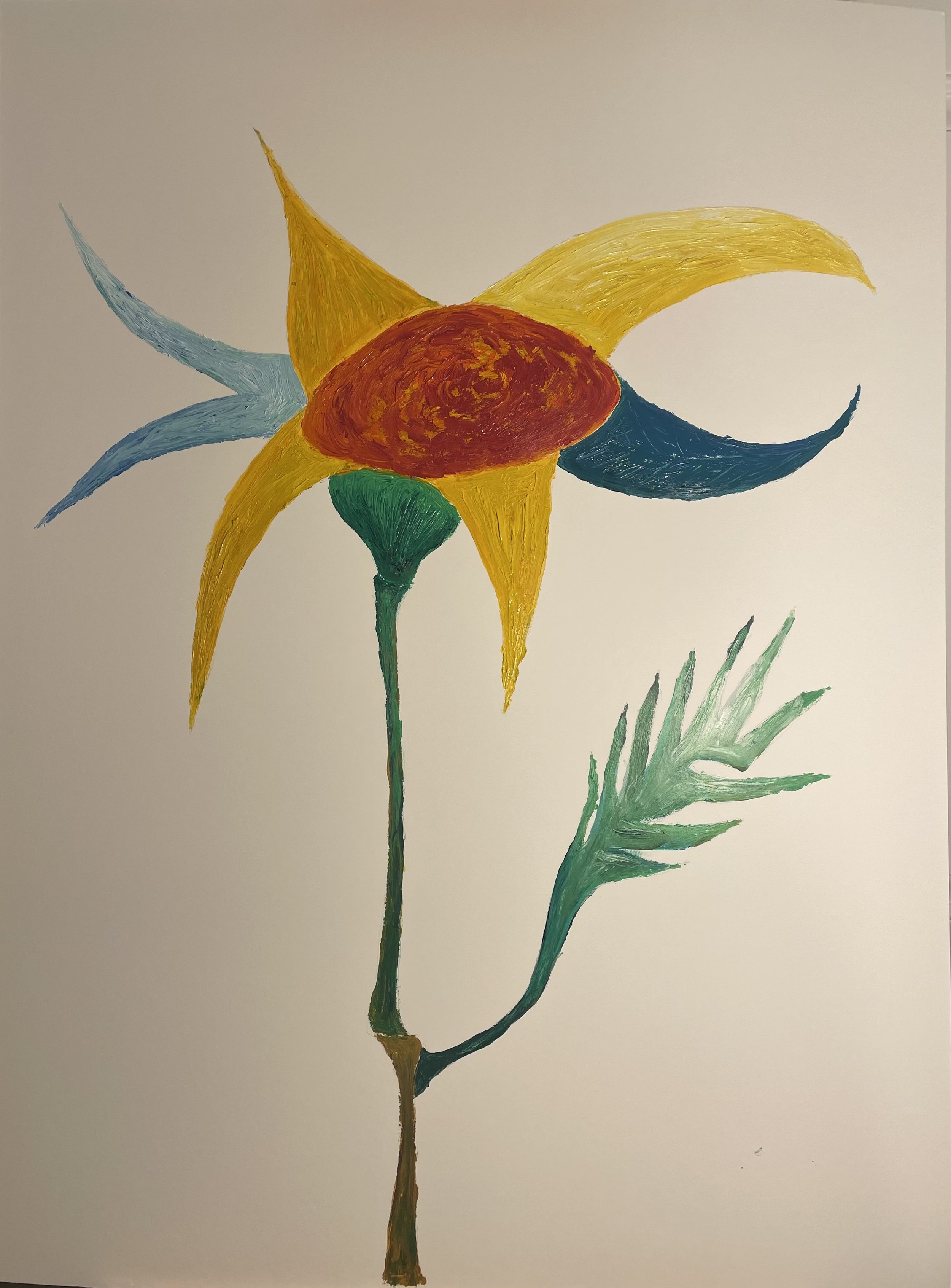NEW FLOWERS FOR NEW TIMES
LET’S START 2025 WITH A NEW SERIES INSPIRED BY IMAGINARY PLANTS AND FLOWERS
After World War II, Alberto Giacometti and Jean-Paul Sartre, like much of European society, faced the desolation, destruction, and despair caused by the conflict. Each approached this challenge in their own field: Sartre through philosophical reflection, and Giacometti through sculpture and painting. Both sought to address the anguish that affects humanity after participating in and succumbing to the horrors of war. Sartre wrote two key texts on Giacometti's work, À la recherche de l'absolu (1948) and Les peintures de Giacometti (1954), in which the philosophical affinities between the two are emphasized, revealing what we could call a certain convergence, both ethical and aesthetic. Giacometti depicted humanity as a solitary, isolated figure burdened by anguish. His sculptures, such as L'Homme qui marche, materialize this solitude through elongated and fragile figures that, despite everything, continue to move forward. Sartre, in turn, reflected on the radical freedom of the human being, their condemnation to choose, and the need to find meaning in a world devoid of transcendent certainties.
In today’s Europe, this "Disoriented Man" is once again relevant. The existential anxiety Sartre analyzed has intensified in the face of contemporary challenges, such as digital alienation, countless social and political conflicts, and the sense of powerlessness before global issues. Giacometti responded to the desolation of his time with sculptures that embody human fragility. While his work did not offer clear answers, it imparted an essential lesson: even in uncertainty, humankind inexorably moves forward. But where to? Today, seventy years later, it seems that the demons of the past are returning in new forms. Therefore, I wanted to dedicate these imaginary flowers to Giacometti and Sartre as spokespeople for a Nature that feels deeply attacked: a cry against isolation, self-absorption, and indifference, which are the dominant signs of our time.
History, even in different contexts, repeatedly confronts humanity with its vulnerability and need for moral meaning. As in the past, Art and Philosophy today must seek a light to combat uncertainty and move forward—without dogma or impositions—toward a global space based on coexistence and respect. With one main purpose: to prevent a new Hecatomb.
“New flowers for new times / Acacia binervata”, dedicated to Alberto Giacometti and Jean-Paul Sartre. By Kasimir de Dalmau (2025) (Acrylic on cardboard - 120cm x 90)
“New flowers for new times / Lilium pardalinum”, dedicated to Alberto Giacometti and Jean-Paul Sartre. By Kasimir de Dalmau (2025) (Acrylic on cardboard - 120cm x 90)
“New flowers for new times”, for Alberto Giacometti and Jean-Paul Sartre. By Kasimir de Dalmau (2024) (Acrylic on paper - 40,5cm x 30,5)
“New flowers for new times”, for Alberto Giacometti and Jean-Paul Sartre. By Kasimir de Dalmau (2024) (Acrylic on paper - 40,5cm x 30,5)



